Bobby Filar
Classifying Sequences of Extreme Length with Constant Memory Applied to Malware Detection
Dec 17, 2020

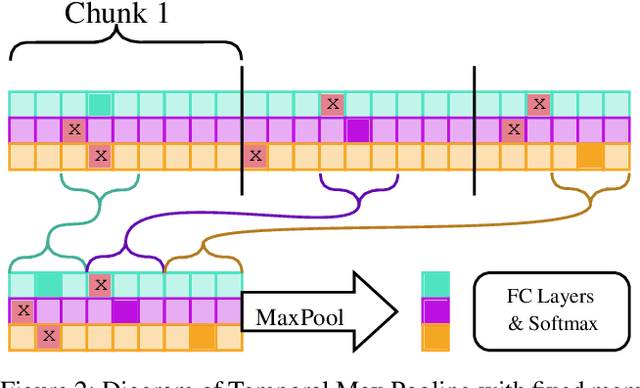
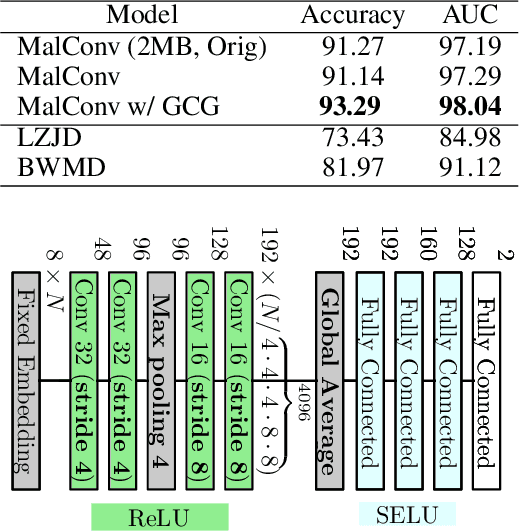
Abstract:Recent works within machine learning have been tackling inputs of ever-increasing size, with cybersecurity presenting sequence classification problems of particularly extreme lengths. In the case of Windows executable malware detection, inputs may exceed $100$ MB, which corresponds to a time series with $T=100,000,000$ steps. To date, the closest approach to handling such a task is MalConv, a convolutional neural network capable of processing up to $T=2,000,000$ steps. The $\mathcal{O}(T)$ memory of CNNs has prevented further application of CNNs to malware. In this work, we develop a new approach to temporal max pooling that makes the required memory invariant to the sequence length $T$. This makes MalConv $116\times$ more memory efficient, and up to $25.8\times$ faster to train on its original dataset, while removing the input length restrictions to MalConv. We re-invest these gains into improving the MalConv architecture by developing a new Global Channel Gating design, giving us an attention mechanism capable of learning feature interactions across 100 million time steps in an efficient manner, a capability lacked by the original MalConv CNN. Our implementation can be found at https://github.com/NeuromorphicComputationResearchProgram/MalConv2
Getting Passive Aggressive About False Positives: Patching Deployed Malware Detectors
Oct 22, 2020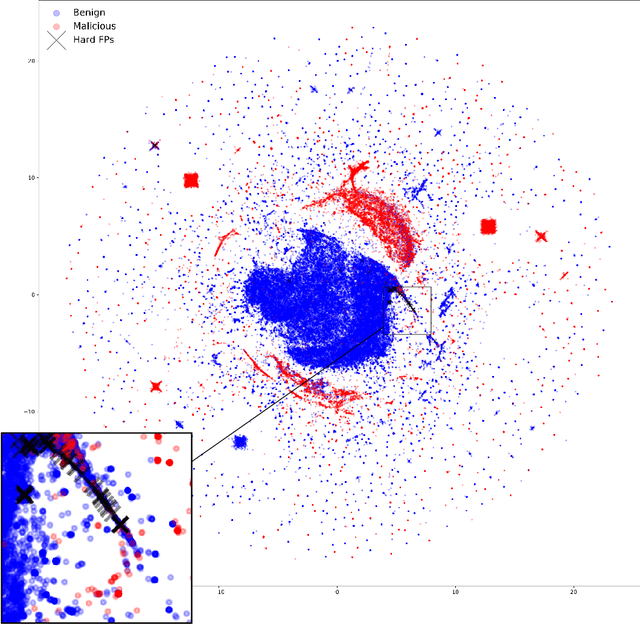
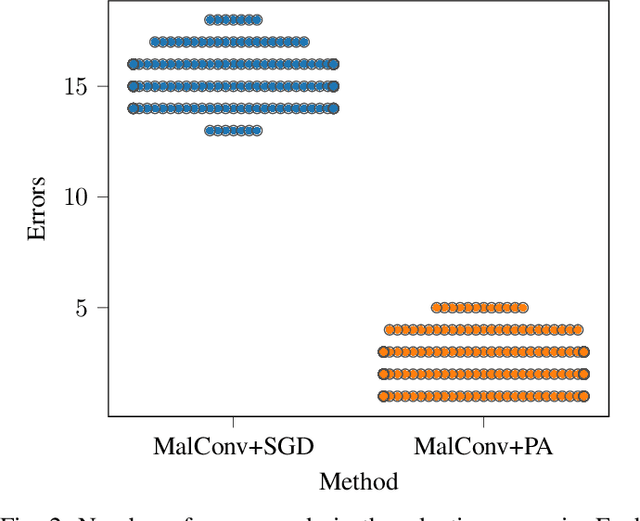
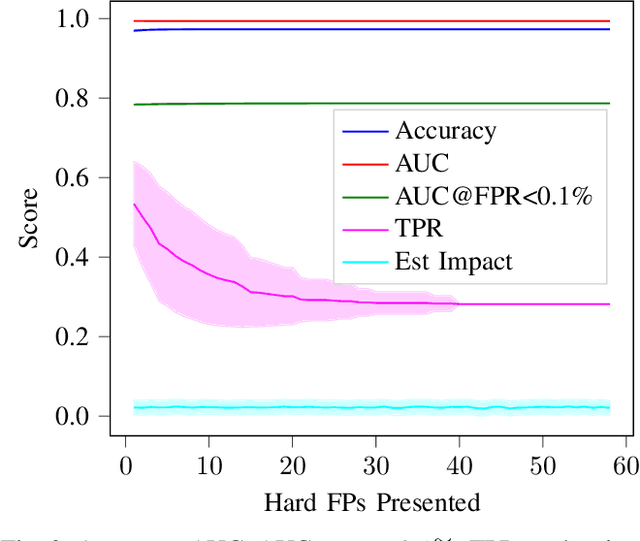
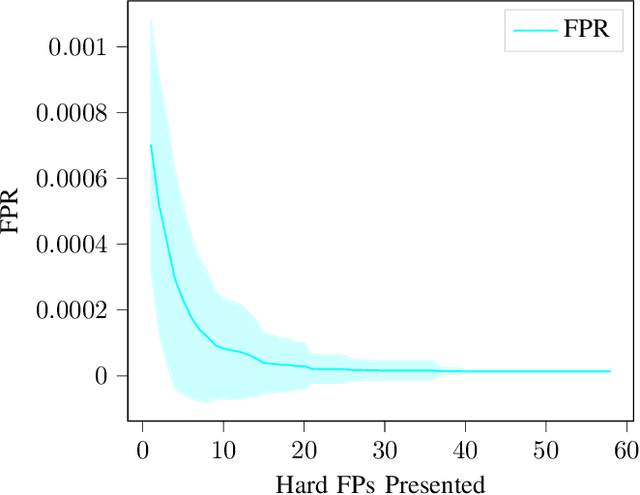
Abstract:False positives (FPs) have been an issue of extreme importance for anti-virus (AV) systems for decades. As more security vendors turn to machine learning, alert deluge has hit critical mass with over 20% of all alerts resulting in FPs and, in some organizations, the number reaches half of all alerts. This increase has resulted in fatigue, frustration, and, worst of all, neglect from security workers on SOC teams. A foundational cause for FPs is that vendors must build one global system to try and satisfy all customers, but have no method to adjust to individual local environments. This leads to outrageous, albeit technically correct, characterization of their platforms being 99.9% effective. Once these systems are deployed the idiosyncrasies of individual, local environments expose blind spots that lead to FPs and uncertainty. We propose a strategy for fixing false positives in production after a model has already been deployed. For too long the industry has tried to combat these problems with inefficient, and at times, dangerous allowlist techniques and excessive model retraining which is no longer enough. We propose using a technique called passive-aggressive learning to alter a malware detection model to an individual's environment, eliminating false positives without sharing any customer sensitive information. We will show how to use passive-aggressive learning to solve a collection of notoriously difficult false positives from a production environment without compromising the malware model's accuracy, reducing the total number of FP alerts by an average of 23x.
Automatic Yara Rule Generation Using Biclustering
Sep 06, 2020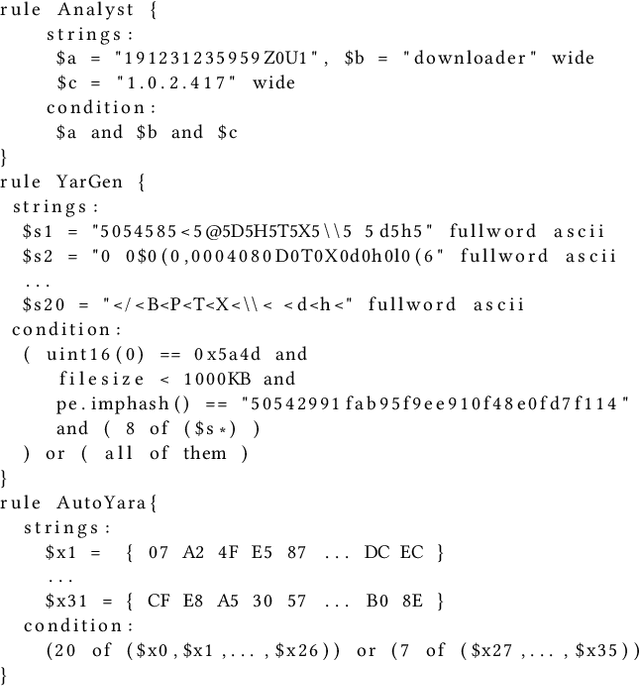

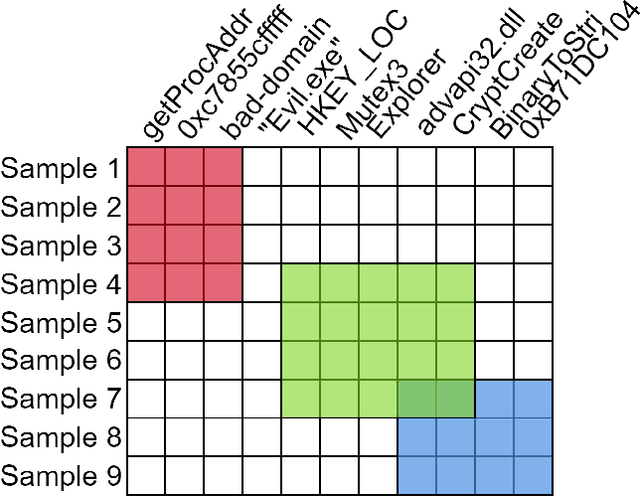

Abstract:Yara rules are a ubiquitous tool among cybersecurity practitioners and analysts. Developing high-quality Yara rules to detect a malware family of interest can be labor- and time-intensive, even for expert users. Few tools exist and relatively little work has been done on how to automate the generation of Yara rules for specific families. In this paper, we leverage large n-grams ($n \geq 8$) combined with a new biclustering algorithm to construct simple Yara rules more effectively than currently available software. Our method, AutoYara, is fast, allowing for deployment on low-resource equipment for teams that deploy to remote networks. Our results demonstrate that AutoYara can help reduce analyst workload by producing rules with useful true-positive rates while maintaining low false-positive rates, sometimes matching or even outperforming human analysts. In addition, real-world testing by malware analysts indicates AutoYara could reduce analyst time spent constructing Yara rules by 44-86%, allowing them to spend their time on the more advanced malware that current tools can't handle. Code will be made available at https://github.com/NeuromorphicComputationResearchProgram .
The Malicious Use of Artificial Intelligence: Forecasting, Prevention, and Mitigation
Feb 20, 2018
Abstract:This report surveys the landscape of potential security threats from malicious uses of AI, and proposes ways to better forecast, prevent, and mitigate these threats. After analyzing the ways in which AI may influence the threat landscape in the digital, physical, and political domains, we make four high-level recommendations for AI researchers and other stakeholders. We also suggest several promising areas for further research that could expand the portfolio of defenses, or make attacks less effective or harder to execute. Finally, we discuss, but do not conclusively resolve, the long-term equilibrium of attackers and defenders.
DeepDGA: Adversarially-Tuned Domain Generation and Detection
Oct 06, 2016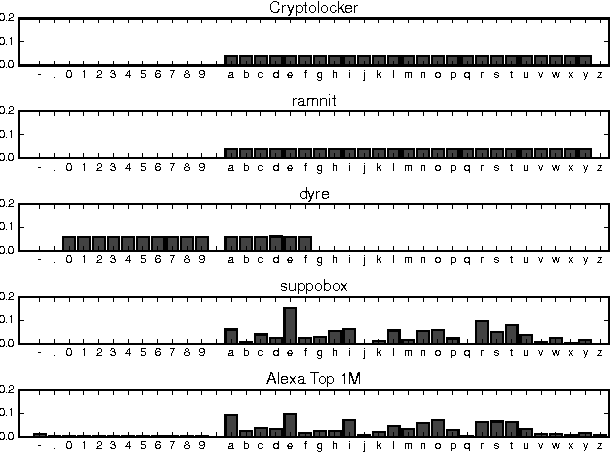
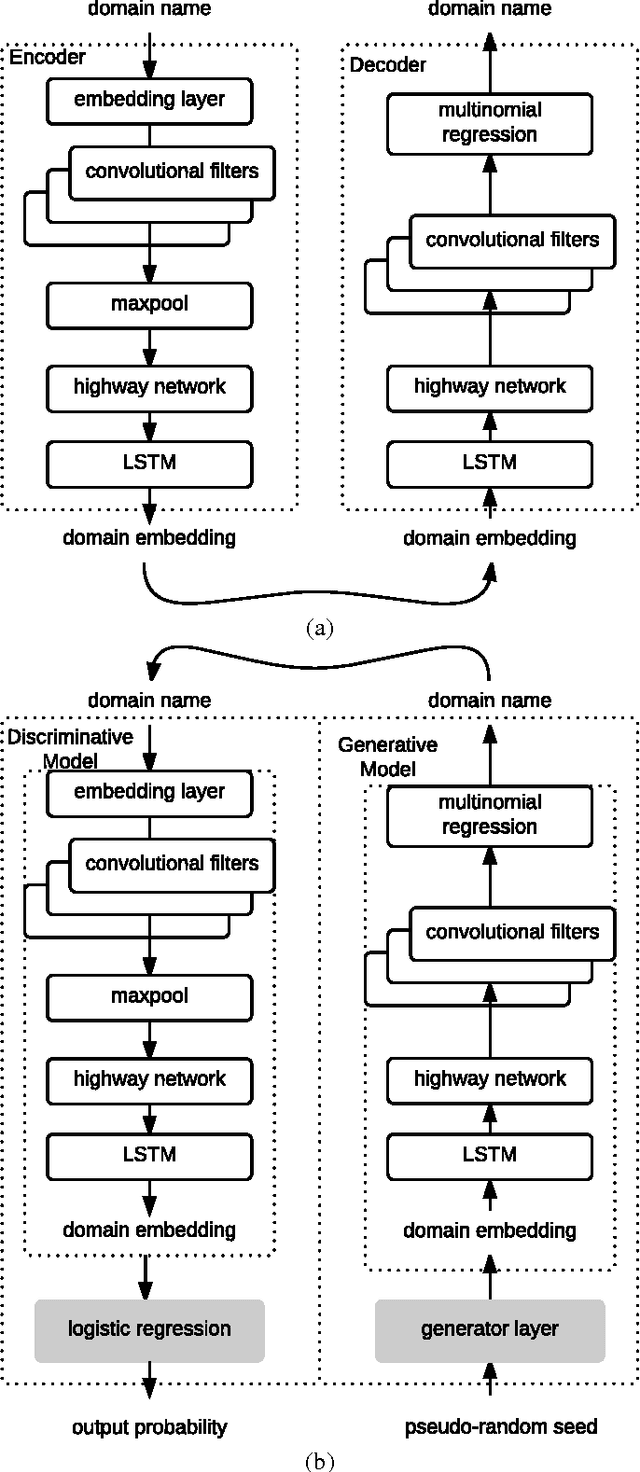
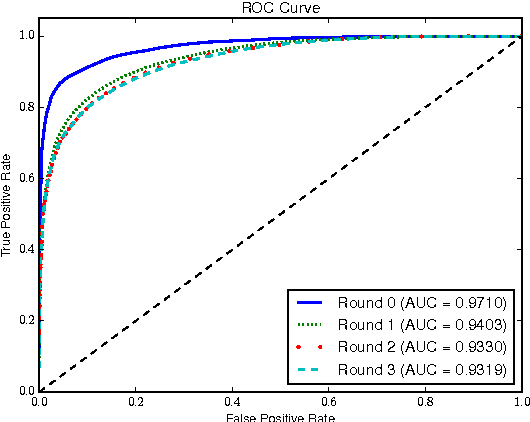
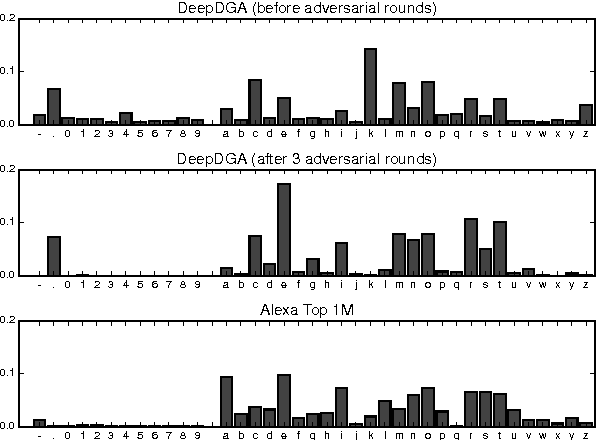
Abstract:Many malware families utilize domain generation algorithms (DGAs) to establish command and control (C&C) connections. While there are many methods to pseudorandomly generate domains, we focus in this paper on detecting (and generating) domains on a per-domain basis which provides a simple and flexible means to detect known DGA families. Recent machine learning approaches to DGA detection have been successful on fairly simplistic DGAs, many of which produce names of fixed length. However, models trained on limited datasets are somewhat blind to new DGA variants. In this paper, we leverage the concept of generative adversarial networks to construct a deep learning based DGA that is designed to intentionally bypass a deep learning based detector. In a series of adversarial rounds, the generator learns to generate domain names that are increasingly more difficult to detect. In turn, a detector model updates its parameters to compensate for the adversarially generated domains. We test the hypothesis of whether adversarially generated domains may be used to augment training sets in order to harden other machine learning models against yet-to-be-observed DGAs. We detail solutions to several challenges in training this character-based generative adversarial network (GAN). In particular, our deep learning architecture begins as a domain name auto-encoder (encoder + decoder) trained on domains in the Alexa one million. Then the encoder and decoder are reassembled competitively in a generative adversarial network (detector + generator), with novel neural architectures and training strategies to improve convergence.
 Add to Chrome
Add to Chrome Add to Firefox
Add to Firefox Add to Edge
Add to Edge